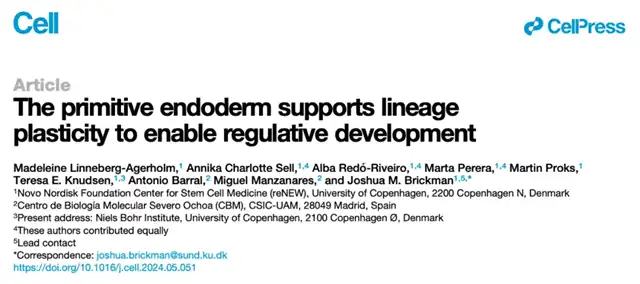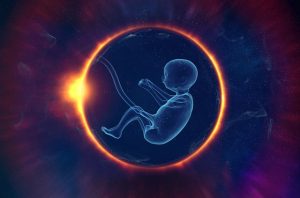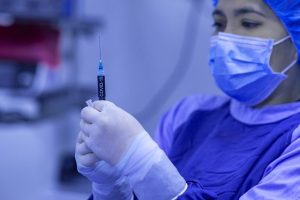Major Breakthrough in Infertility Research: This Stem Cell Could Be Key to IVF and Other Fertility Treatments
- Major Breakthrough in Infertility Research: This Stem Cell Could Be Key to IVF and Other Fertility Treatments
- Flesh-Eating Bacteria Infection Over 1000 Cases in Japan!
- CDC Recommends Updated COVID-19 Vaccines for 2024-2025 Season
- Will China and India produce cheaper “Miracle Weight Loss Drug”Semaglutide soon?
- Keto Diet Accelerates Aging and Promotes Cancer Metastasis
- The Critical Role of Immune Cell Triumvirates in Enhancing CD8+ T Cell Function
Major Breakthrough in Infertility Research: This Stem Cell Could Be Key to IVF and Other Fertility Treatments
- Chinese-made Drug Enters Australia: Causing at Least 20 Deaths!
- How serious is Japan’s “flesh-eating bacteria” problem?
- Taiwan 6th wave of COVID outbreak: 623 confirmed cases in one week and 38 deaths
- FDA has mandated a top-level black box warning for all marketed CAR-T therapies
- Can people with high blood pressure eat peanuts?
- What is the difference between dopamine and dobutamine?
- How long can the patient live after heart stent surgery?
Major Breakthrough in Infertility Research: This Stem Cell Could Be Key to IVF and Other Fertility Treatments
Reproduction is one of the fundamental characteristics of living organisms. In humans, conception is a highly complex process. Initially, a sperm must fertilize an egg in the fallopian tube. The fertilized egg, or zygote, then begins to divide and, after about five days, becomes a blastocyst which implants in the uterus and eventually develops into a fetus.
However, factors such as environmental pollution, irregular lifestyles, and increased stress have adversely impacted the quality of sperm and eggs, making natural conception increasingly difficult. As a result, more people are turning to assisted reproductive technologies, but the success rates remain low, around 20-30%, depending largely on the woman’s age and reproductive health.
Recently, a research team from the University of Copenhagen published a groundbreaking study in the journal Cell, titled “The primitive endoderm supports lineage plasticity to enable regulative development.” This study highlights the potential of a type of stem cell present in early embryos—the primitive endoderm (PrE)—which can independently generate embryos when isolated. This discovery may become pivotal in treating human infertility and enhancing the success of in vitro fertilization (IVF) and other fertility treatments.

Cells in early embryos possess remarkable abilities to adapt and regulate their destinies in response to disruptions, a characteristic known as plasticity. This enables them to change their differentiation pathways, a critical feature of developmental regulation. Previous studies have shown that in mouse embryos, blastomeres at the two-cell stage can develop into complete organisms when separated, although this potential diminishes as development progresses.
Notably, the formation of the blastocyst involves the differentiation of inner cell mass (ICM) cells into the epiblast (Epi) or the primitive endoderm (PrE), mediated by fibroblast growth factor and extracellular signal-regulated kinase (FGF/ERK) signaling. The epiblast gives rise to the embryo itself, while the PrE, also known as the hypoblast, subsequently forms the parietal endoderm (PE) and visceral endoderm (VE).
In this latest study, researchers focused on the PrE, which typically provides nutritional and supportive functions to the normal embryo as “peripheral cells.” They discovered that when these stem cells from the PrE of mouse embryos were isolated and cultured separately, they formed “embryoid-like” structures with high efficiency.
The PrE maintains a longer window of plasticity compared to the epiblast and can transition to an epiblast fate during normal development. PrE stem cells, derived from initial embryonic stem cells (ESCs), can expand into nascent extra-embryonic endoderm (nEnd) under the influence of LIF, Wnt, and TGF-β signaling.
The research team recreated this plasticity in vitro using nEnd and demonstrated that cells expressing OCT4 in nEnd could form both epiblast (Epi) and trophoblast (TE) lineages when cultured separately, leading to the creation of a reconstituted embryo model.
Further investigation revealed that the plasticity of the PrE is regulated by continuous expression of JAK/STAT signaling, OCT4, and a set of pluripotency-associated transcription factors. These factors safeguard an enhancer landscape conducive to multi-lineage differentiation. OCT4, a key factor in this process, is one of the famous “Yamanaka factors” used to induce pluripotent stem cells (iPSCs), supporting both cell pluripotency and the genetic regulatory network controlling plasticity.
Joshua Brickman, the lead author, noted that the final step in blastocyst development involves forming the PrE, which seems to “remember” how to create a complete embryo. When isolated, the PrE can independently generate a new embryo.
In summary, this research identifies a previously supporting cell population, the primitive endoderm, which can form “embryoid-like” reconstituted embryos when cultured separately and elucidates the underlying molecular mechanisms. These findings suggest that defects in the PrE may contribute to female infertility by impairing embryonic development and repair mechanisms. This breakthrough could significantly improve current infertility treatments and inspire the development of novel fertility therapies.
Major Breakthrough in Infertility Research: This Stem Cell Could Be Key to IVF and Other Fertility Treatments
(source:internet, reference only)
Disclaimer of medicaltrend.org
Important Note: The information provided is for informational purposes only and should not be considered as medical advice.



